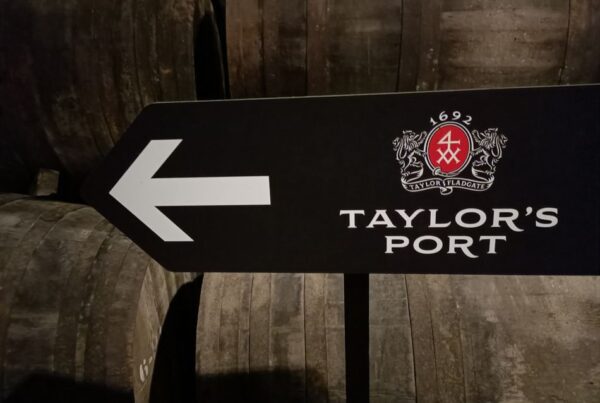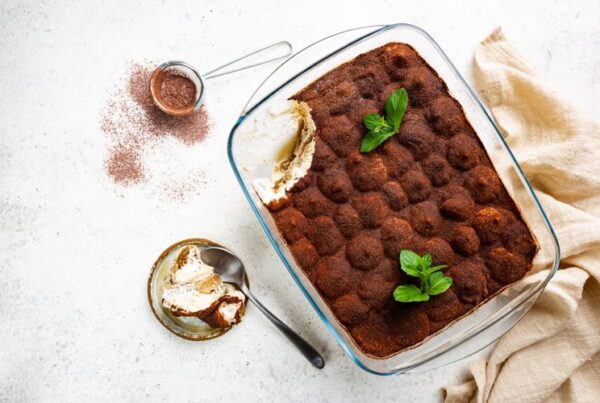This full-flavored, festive gravy/sauce can be made in advance. Soy sauce and dried mushrooms add an ‘umami’ or savory hit to complement any roast.
Ingredients
- turkey neck and giblets (optional, see next ingredient)
- 4 chicken wings, chopped into pieces (or 8 chicken wings if you don’t have the turkey neck and giblets)
- 2 onions, unpeeled and quartered
- 1 carrot, roughly chopped
- 2 celery sticks, roughly chopped
- 1 garlic bulb, halved
- 1 tbsp sunflower oil
- 1 tbsp clear honey
- 2 tbsp soy sauce
- 1 tbsp tomato purée
- 3/8 cup plain flour
- 1 handful dried mushrooms (optional)
- 1 tbsp red wine vinegar or Sherry vinegar
- ½ cup port, Sherry or red wine
- 4 cups chicken stock
- 3 bay leaves
- small bunch thyme
Directions
Heat oven to 427 °F/ 220 °C.
Add the turkey bits and/or chicken wings into a roasting tin with the onions, carrot, celery, and garlic. Toss with the oil and spread out into a single layer. Place in the oven for 40 mins undisturbed – it should look the right side of just burnt, as this will give it lots of flavor.
Remove the tin from the oven and mix in the honey, soy sauce and tomato purée. Toss ingredients together until everything is completely coated, and then return to the oven for 10 mins until sticky and caramelised. Remove the tin from the oven again, sprinkle over the flour and dried mushrooms (if using) and return to the oven for a final 10 mins. If your roasting tin is flameproof, put it on a low flame/heat, add the vinegar and sizzle for a moment. (If your tin isn’t flameproof, add the vinegar, stir to loosen all the burnt bits from the tin, and transfer into a saucepan to continue).
Pour in the Port and cook until you have a thick, glutinous paste mixed in with all the ingredients.
Add the stock and herbs, bring to the boil and cook for 10 mins.
Turn off the heat and use a potato masher to mash everything to extract as much flavour out of it as you can. Carefully pass the contents through a sieve over a clean saucepan, pushing down on the contents of the sieve. Simmer the gravy until it is thick and glossy.
What is Port wine?

Port wine is a fortified wine, which means that additional alcohol (grape spirit) is added to fermented grape juice to produce an alcoholic sweet wine. It is made from black grapes grown in the upper Douro in Portugal. The majority of Port wine is red, but it is also made in white and rosé styles.
Types of Port
There are different styles of Port with different names, which can be confusing. Let’s discuss briefly what they are, what they taste like and how they differ from one another.
Ruby Port
Ruby Ports are bottled ready to drink. They are deeply colored and taste fruity. There are three types of Ruby Port:
Inexpensive Ruby Port
Inexpensive Ruby Port is fruity, sweet and simple wine, usually aged for less than three years.
Reserve Ruby Port
Reserve Ruby Port uses better quality wine, has complex flavors and intensity. They are aged for up to five years.
LBV Port
LBV Port is similar to Reserve Ruby Port, but the wine is made from a single year’s harvest.
Tawny Port
Tawny Ports are a paler-colored Ruby Port (some have White Port added to adjust the color) with caramel and toffee flavors.
Reserve Tawny Ports are aged for a minimum of six years in small oak vessels. They develop kernel and oxidative flavors (walnut, coffee, caramel) and have a tawny or even brown appearance rather than the ruby or purple colors of Vintage Ports.
Tawny Ports with indication of age can be labelled 10, 20, 30 or 40 (indicates the average, rather than a minimum age). They do not need to be decanted and should be drank as close to the bottling date as possible. This date is usually written on the label. They are best served slightly chilled.
Vintage Port
Vintage Port is only made in good years. They are made from grapes from the best vineyards. After a short period of ageing in oak, Vintage Port is bottled unfiltered. They are long-live wines that age well.
Generally speaking, a Vintage Port is a special occasion drink to savor, rather than to use as a cocktail ingredient.
White Port
White port is made from white grapes and can be made in a wide variety of styles.
Rosé Port
Rosé Port is a recent variation that was first released in 2008. It is created in a similar way to rosé wine. There is a shorter period of contact with the grape skins, ensuring less color is extracted (creating the rose color rather than the typical deep ruby color created with longer contact with the grape skins).





